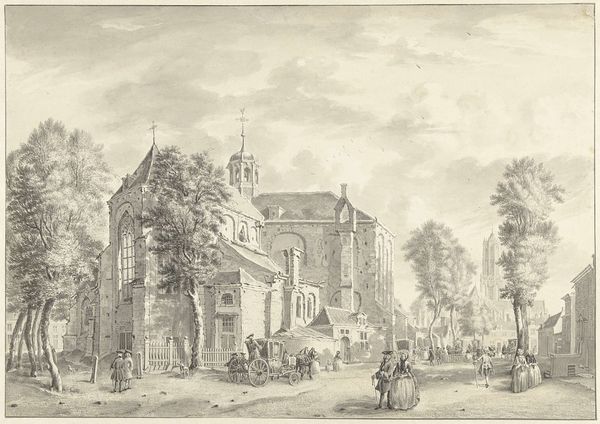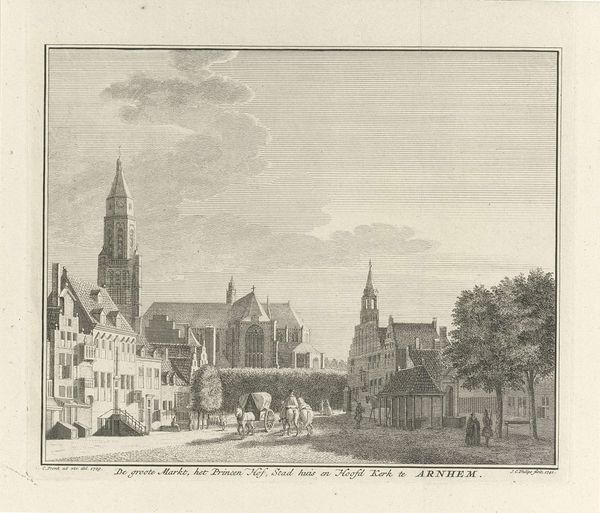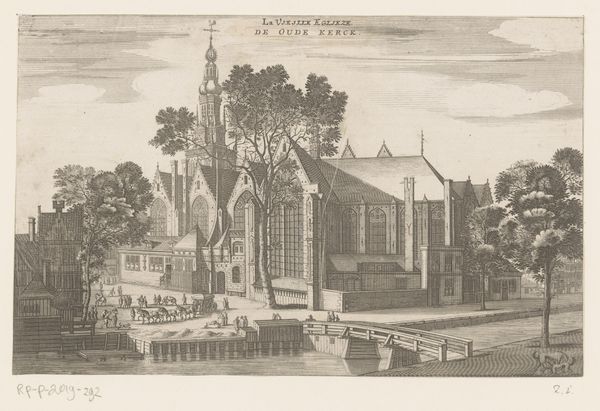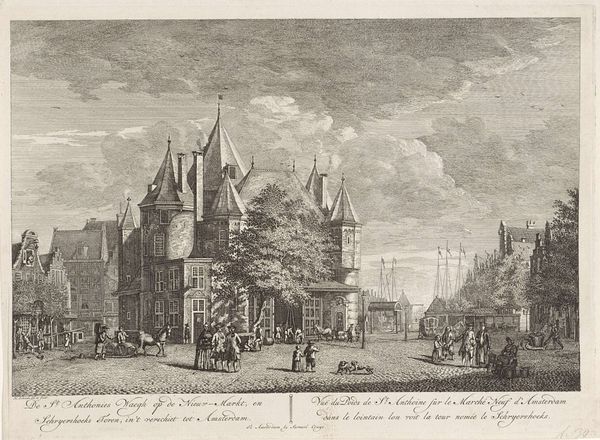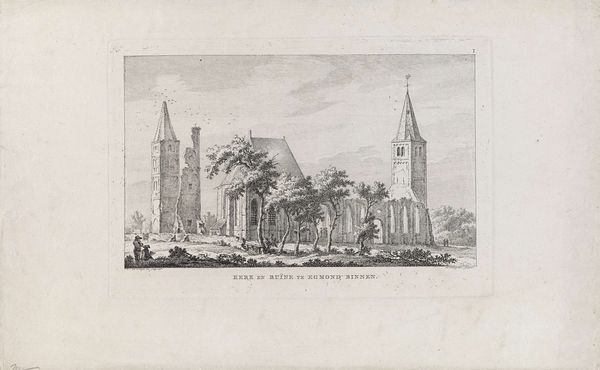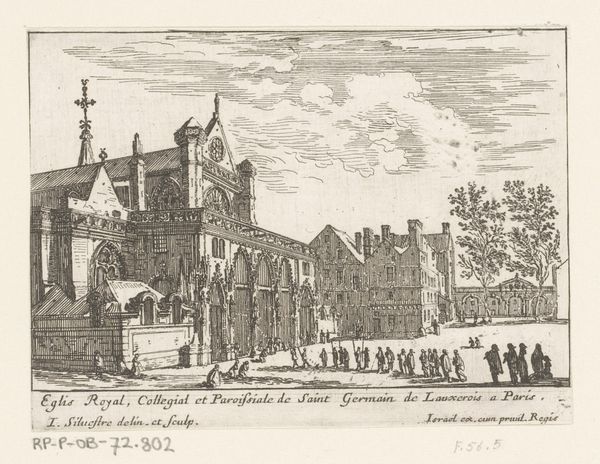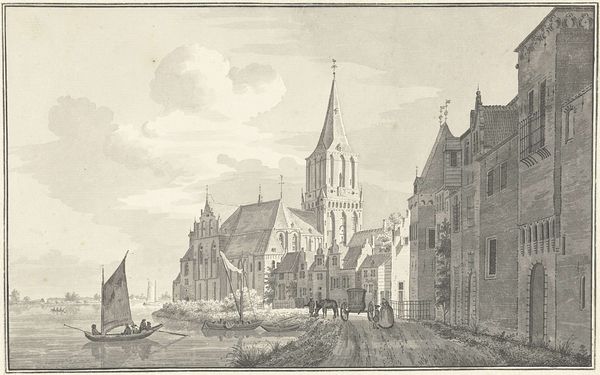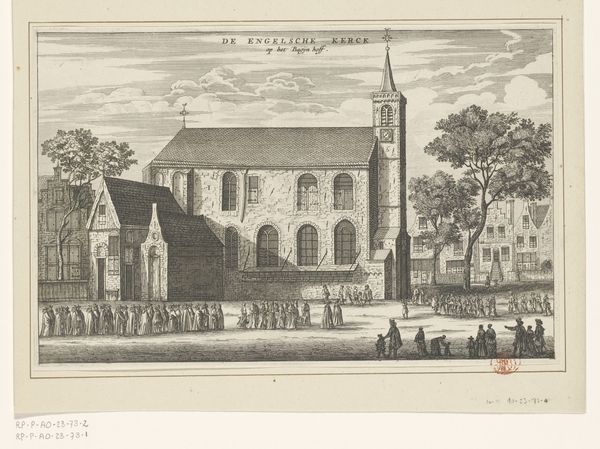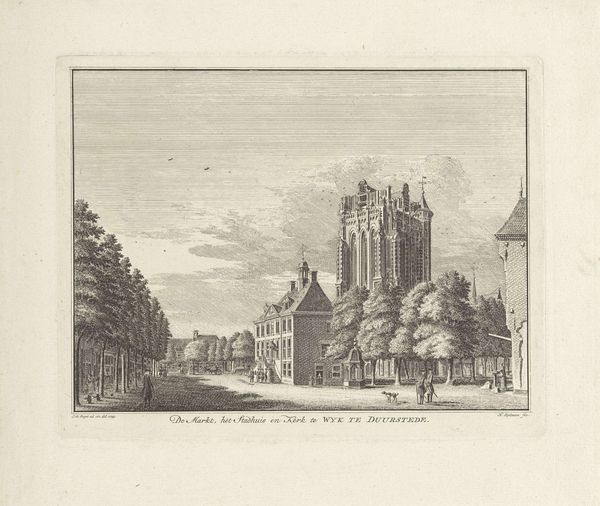
print, engraving
#
baroque
# print
#
cityscape
#
engraving
Dimensions: height 371 mm, width 425 mm
Copyright: Rijks Museum: Open Domain
This print of the Grote of Sint-Laurenskerk in Rotterdam was made by Jan Punt in the mid-18th century. It depicts the church not just as a religious building, but as an integral part of the bustling life of the city. Consider the visual codes here: the church dominates the skyline, yes, but it’s surrounded by the daily grind of commerce and transport. The Netherlands in this period was a hub of global trade, and Rotterdam was a key port city. Punt’s image captures that spirit. Made during the Dutch Golden Age, it reflects a society where religious institutions and the mercantile class coexisted, each shaping the other. The church, while a symbol of spiritual life, was also a physical landmark around which the city’s economic activities flowed. To understand this image fully, we can examine city records, trade statistics, and even sermons from the period. These sources help us appreciate the complex interplay of social, economic, and religious forces that defined the Dutch Republic. The meaning of this print lies not just in its artistic merit, but in its reflection of a specific time and place.
Comments
No comments
Be the first to comment and join the conversation on the ultimate creative platform.

